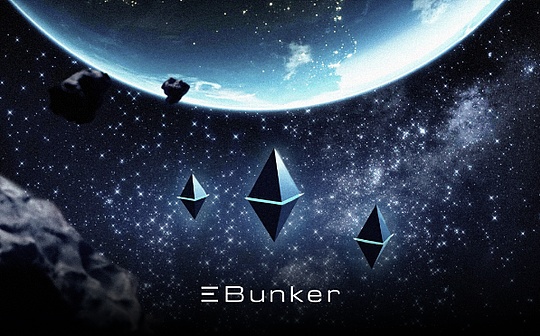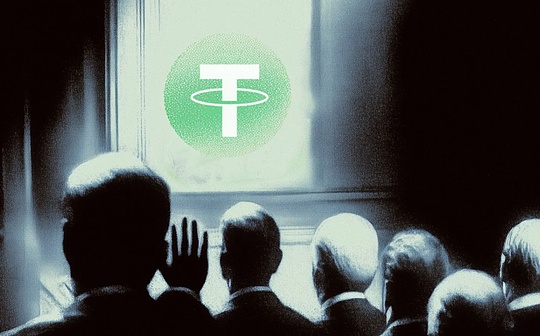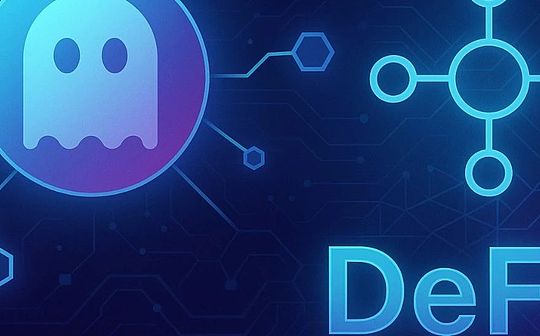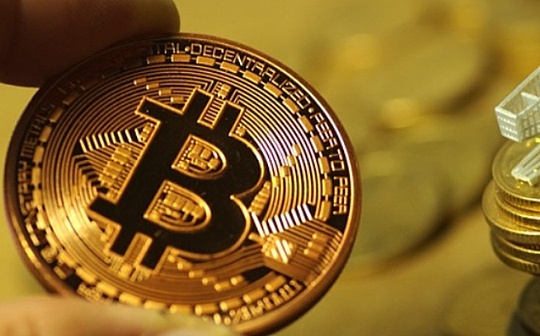
Author: Jonnyhimalaya

This article explores some of the most promising Layer1 Bitcoin decentralized trading platforms (Dexs) and automated market makers (AMMs).Most of these markets are still under development, and some are still in the testnet stage.Overall, these markets can be divided into two categories: order book trading platforms and automatic market makers.This article conducted research interviews with most of the teams involved.
DeFi on Bitcoin is coming soon.We have initially seen the appearance of DeFi on Bitcoin, such as Ordinals, Runes, and meta-protocols such as BRC20 and TAP.The community hopes to trade “jam coins” on Bitcoin, but this situation is about to change at the moment!
Currently, trading tokens on Bitcoin is poor and full of friction.In markets like Unisat and Magic Eden, sellers of tokens (BRC20 or Runes) must list a specific number of tokens at a specific price and wait for the buyer to buy the same number of tokens at the same price, which increases the friction of the transaction.
Many teams are trying to solve this problem by introducing AMM and Dex-style transactions into Bitcoin, providing the trading experience we are accustomed to on EVM.Since Bitcoin uses the UTXO model, not the account model used by EVM, some features need to be redesigned.In fact, UTXO has technical features that cannot be achieved by EVM in designing partially signed Bitcoin transactions (PSBTs) to implement atomic exchanges.
When I analyzing each market, I considered specific criteria: user experience at exchange, degree of decentralization, whether to allow licensing and other trade-offs.
Most teams are innovating in PSBT and signature hashing (Sighash).Signature hash is a mechanism used to sign input and output of Bitcoin transactions.There are six different types of signature hashing, from the safest but least flexible “Sighash All” to the least secure but most flexible “Sighash None — Anyone Can Pay”.Currently popular markets like Unisat and Magic Eden use “Sighash-Single” to create their PSBTs.This means that not all outputs have been signed and the transaction may therefore be affected by MEV snipers.And using “Sighash-All” means that all inputs and outputs are fully signed, and any transaction signed in this way can avoid MEV sniping.
Many other factors need to be considered when analyzing Dex or Swap, such as liquidity and slippage, market making and order-taking fees, liquidity provider incentives, trading volume, etc.However, since most of the markets for analytics are still in the testing or early release phases, these metrics will take time to become relevant.
1. Fluid BTC

Fluid Tokens is a decentralized trading platform (DEX) based on order books.Users can currently trade Runes-BTC, and the Runes-Runes function will be launched soon.Fluid is essentially a market for peer-to-peer trading.When traders want to create an order (maker), they make an off-chain “commitment” (for example, I want to sell 1000 $DOGs and exchange for 0.001 BTC).These commitments will be published in the order book as limit orders.When a buyer accepts an order, i.e., a market buy or sell, they initiate a PSBT (partially signed bitcoin transaction), which details all inputs and outputs promised by the maker.The original maker is then notified (by email or in-app) that their limit order has been matched and they sign PSBT to complete the transaction as a broadcast transaction.
This transaction design is completely license-free and is conducted on-point.The market is essentially a facilitator of these transactions.The trade-off is the round trip in user experience.Maker makes a commitment to publish a limit order – taker matches the order and initiates PSBT – and then maker signs and completes the PSBT.This friction essentially slows down the trading process and usually does not meet the trader’s need to sell quickly.Another potential issue is the manipulation or deception of orders, for example, maker creates orders they have no intention of fulfilling in order to try to manipulate prices.To mitigate this, the Fluid platform currently only allows one maker commitment order per transaction for each address.Therefore, it is temporarily impossible to gradually establish positions through ladder orders, but this function is already under development plan.
All transactions on Fluid are completely license-free, and since “Sighash All” can be used in PSBT, they are also protected by MEV and sniper protection, meaning that transactions will only happen if both maker and taker addresses are involved in the transaction.Verified.Third parties cannot “snipe” transactions, which often happens in transactions on currently popular markets such as Magic-Eden and Unisat.Fluid prioritizes transactions that are completely licenseless and secure at the cost of a less smooth trading experience.Fluid will launch their market in the coming weeks.
2. Saturn BTC

Saturn BTC is an on-chain trading platform based on order book, originally launched in the summer of 2023 for Rare Sat (the smallest unit of Bitcoin).They just launched the Runes trading market.They focus on creating smooth trading experiences similar to centralized trading platforms.They have a “peer-to-peer” order book where users can place limit orders on the chain to fill the order book, and users can also make market purchases, ‘accept’ existing limit orders in the order book.This user experience is very smooth, especially if the user does not need to worry about splitting up UTXO or matching the exact requirements of orders placed by the maker.This is a major improvement to the traditional, more cumbersome Runes trading experience on Unisat and Magic Eden.Saturn also has a “swap” feature, but this is not an AMM-style liquidity pool exchange.Through exchange, the user only buys the right amount of sell orders in the order book at the market price, and vice versa.
To achieve this improvement in trading experience and functionality, especially related to limit orders and matching engines, Saturn currently requires users to “deposit” funds into a “trading account”, a signed by the user and written by the userSaturn signed by multiple signature accounts.This “transaction wallet” will be replaced by a one-time multi-signature in the next version.When users create a limit order, they sign a “Sighash None” PSBT, which technically handes control of Token/Bitcoin involving that particular order to the Saturn platform and matching engine in a 2/2 multi-signature manner.Transactions are finalized via “Sighash All” before broadcasting to the memory pool, ensuring sniping is prevented.This trading process means that as long as the order remains open, traders must trust Saturn to handle the specific funds involved.Therefore, the transaction experience is not completely license-free, and has some centralized aspects.
Saturn takes an interesting and innovative approach to replicate the smooth trading experience of the centralized trading platform directly on the Bitcoin Layer 1 chain.Their platform also offers full charting capabilities provided by Trading View.Without splitting orders, the platform will handle these transactions, and there can be partial transactions and multiple wallets in the same transaction.Saturn is a very user-friendly, intuitive decentralized trading platform with many product improvements and new features in its roadmap.
3. UniTap

Unitap is a decentralized trading platform (Dex) built for the TAP ecosystem.The TAP meta protocol allows various DeFi functions and operations to be performed directly on Bitcoin Layer 1, using distributed indexers to assist in computing and account balance.
Unitap is building a marketplace that not only trades Tap-based assets, but also Tap-to-Runes transactions.They are developing a Runes to Tap bridging scheme.
Unitap designed a fully unmanaged switching system.Users who want to sell tokens (such as -tap) can use “Sighash Single” to create a PSBT that specifies the number of tokens they want to sell and what form (tokens and quantity) they want to be in return.The return can be BTC or other Tap or Rune Token.This creates a very specific sell order that may take some time to find a match, especially when the market is low in liquidity.To help overcome this friction, Unitap puts this sell order into the market to match all other orders that match this particular sell order buyer.For example, if I want to sell some $-tap, I can select that token and click on the “Give” tab.This will open up a market with all orders to buy $-tap, and sellers of other assets are looking for $-tap in exchange for their assets (see screenshot above).This increases market flexibility and helps facilitate fast sales that traders prefer.Currently, Tap-Tap assets are tradable, and Tap-Runes and Runes-Tap exchanges will be launched in the coming months.
Unitap will also launch its own wallet in the coming weeks, supporting all TAP operations and supporting cross-protocol exchanges such as Tap-Runes or Tap-BRC20.
4. Dotswap
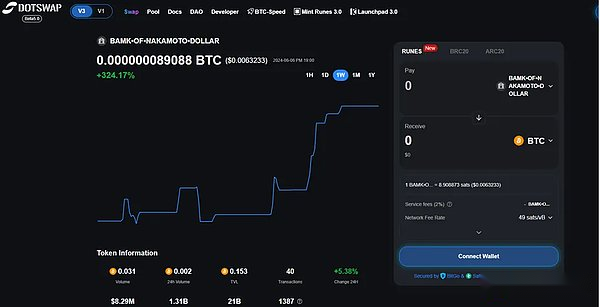
Dotswap is a native AMM-style trading platform based on Bitcoin Layer 1, supporting BRC20, ARC20 and Runes.Its trading experience is very similar to how Uniswap works.Users can already exchange between BRC20/Bitcoin and Runes/Bitcoin, and the exchange of Runes/Runes is about to be launched.
Atomic exchanges are completely license-free and unmanaged, using “Sighash All” PSBT.Users choose how many bitcoins/Tokens they want to exchange and receive the corresponding number of another tokens in the same transaction.Using Sighash-All means that all transactions are sniper-resistant.
The “trade” here is that liquidity pools are managed.When liquidity providers deposit funds into liquidity pools, these funds are stored in a multi-signature system because Bitcoin does not have smart contracts to send funds to it.Dotswap’s unique MMM (multi-layer multi-signature matrix) hosting scheme is developed in-house and runs in partnership with hosting parties Safeheron and BitGo.The process of adding and removing liquidity is as simple as expected, similar to the experience of EVM AMM.Dotswap is the first team on Bitcoin to implement a centralized serializer to protect transaction sorting (and therefore price sorting).
Dotswap has also developed a new Runes Token startup platform that works similar to pump.fun on Solana.At startup, participants use Bitcoin to purchase specific Runes Tokens, most of which are used to seed liquidity pools for that Token.Therefore, any Rune launched on this platform has an immediate liquidity pool where users can exchange and trade in a completely license-free manner.Contributors to launch the platform also have their share of the liquidity pool and can receive transaction fees.
Dotswap has developed a completely license-free and non-custodial AMM trading platform for traders/switchers to use.A liquidity provider is the one who assumes the assumption of trust.Dotswap has traded more than $40 million to date.If Dotswap successfully attracts more liquidity into their pool (through favorable transaction fees, liquidity mining, etc.), the transaction volume should increase.
5. Ordiswap

Ordiswap is an AMM that performs BRC20 or Runes Token exchange on the chain.Users can exchange on Bitcoin Layer 1, provide liquidity, remove liquidity, and create new liquidity pools.Last year, Ordiswap was the first AMM to appear in the BRC20 space.
When users initiate an exchange on Ordiswap (for example, swap BTC for ORDI), they create a transaction that sends their BTC to the Ordiswap liquidity provider.The transaction also includes a script that contains details of the exchange.The Ordiswap backend indexer reads this script and sends the corresponding number of ORDIs to the user in subsequent transactions.This means that users must trust the Ordiswap API when signing a transaction to initiate an exchange.
Ordiswap uses a set of off-chain servers, oracles, indexers, and Bitcoin nodes to create AMM capabilities.Ordiswap’s server updates the off-chain balance of participating transaction users and performs regular settlements on the chain.Currently all exchanges are processed by the Ordiswap API.This is slightly less elegant than the solution of atomic exchange using PSBT, which can complete the entire exchange in the same transaction.However, atomic exchange is already in the roadmap.
The liquidity pool is again hosted and is currently discussing the issue of upgrading security with hosting partners.Their V2 BRC20 swap has been online for two months, with a total trading volume of about $500,000.
If everything they set out can be achieved, Ordiswap has the potential to become the main AMM on Bitcoin.This is an ambitious, modular Bitcoin exchange implementation.They are currently in the closed beta phase of V3 mainnet.The tests were reportedly going well and they were refining the final details of the exchange mechanism.
6. RunesDex

Runes Dex is another AMM recently launched on Bitcoin Layer 1 for Runes-BTC transactions.They are well-funded, have a large team and are growing rapidly.They are currently in the Alpha beta stage on the mainnet.Users can test and swap their local Rune IS•THIS•WORKING.Similar to the aforementioned AMM, transactions on Runes Dex are completely uncustodial and license-free, but the liquidity pool is custodial.Currently Runes Dex has full control over private keys, which are stored in vaults using AWS.The custodial partnership is in progress.
They are also building a boot platform similar to pump.fun, a Runes tracker that takes into account pending transactions in the memory pool, and a Runes bridge to bridge memecoins from other chains such as Solana to Runes.They use “Sighash All” in Dex exchange PSBTs, which means every exchange is sniper resistance.They plan to have liquidity providers charge fees in Bitcoin.They also created automatic UTXO splitters in terms of liquidity provision to ensure a smooth experience when switching.Runes Dex’s AMM will be fully online in the coming weeks.Another AMM with potential.
7. Runeswap — Swapsats

Runeswap is developed by the Swapsats team and is a Runes-BTC AMM-style exchange platform that developed OGsub 10k Ordinals collection Ordinal Eggs behind it.This exchange platform will operate similar to the exchange method mentioned above; it provides a license-free exchange experience, but the liquidity pool is hosted.
As a group of collectors, their philosophy is to create a decentralized trading platform for their community.Holders of their collections will receive various benefits on the trading platform, such as reducing transaction fees and earnings sharing from the trading platform’s revenue.They prioritize smooth user interface and a good user experience to further foster their community.Currently, the exchange platform is in the alpha test network stage, and the main network is planned to be launched in the next few weeks.
8. RunesFi

RunesFi’s goal is to be a one-stop infrastructure hub for Bitcoin assets.They plan to build a Runes block browser, launch platform and incubator, Runes engraver and, most importantly, a decentralized trading platform for Runes and BRC20.They are currently in the test network stage of their trading platform, and their mainnet products are expected to be available by the end of 2024.
There are also some other decentralized trading platforms under development that promise more decentralization than those listed above, such as Omnisats and Motoswap (OPNet).I can do the analysis when they are close to rolling out and more information is available.Unisat recently announced their new BRC20 switching module, which will include liquidity pools and more.Currently under development and is expected to be available within 6 months.Magic Eden is also hinting at the upcoming exchange feature, although the timeline is unclear.
9. Conclusion and prospect
Building on Bitcoin is challenging, especially if trying to directly replicate the functionality of an Ethereum Virtual Machine (EVM).Bitcoin’s UTXO model is different from EVM’s account-based model. Teams that can make the most of Bitcoin’s unique mechanisms (such as PSBTs, Sighashes, etc.) are more likely to succeed in the long run than just trying to recreate the EVM stack.team.
Teams currently creating innovative solutions make trade-offs on different aspects.For example, in terms of the order book decentralized trading platform, Saturn prioritizes ultra-smooth user experience and features, sacrificing transactions that require no permission.Fluid takes a different approach, prioritizing fully decentralized and non-custodial transactions, despite some friction in the transaction experience.It will be very interesting which philosophy the market values more.
In the automated market makers (AMM), most teams are creating a system that allows traders to trade completely without permission, but liquidity pools adopt some form of vault, multi-sign or semi-custodial solutions.This may be an acceptable trade-off, as most traders don’t care how liquidity pools are set up as long as they can swap quickly and without permission.Additionally, providing liquidity to well-known custodians may even be a more attractive solution given how many bridges and contracts are being attacked on Ethereum.Currently, Dotswap has advantages in this regard as they go the farthest in development, product delivery and liquidity provider hosting solutions.However, other teams such as RunesDex and Ordiswap are also following closely behind, with their products coming soon.
I believe there are other teams I don’t know about when writing about building.




